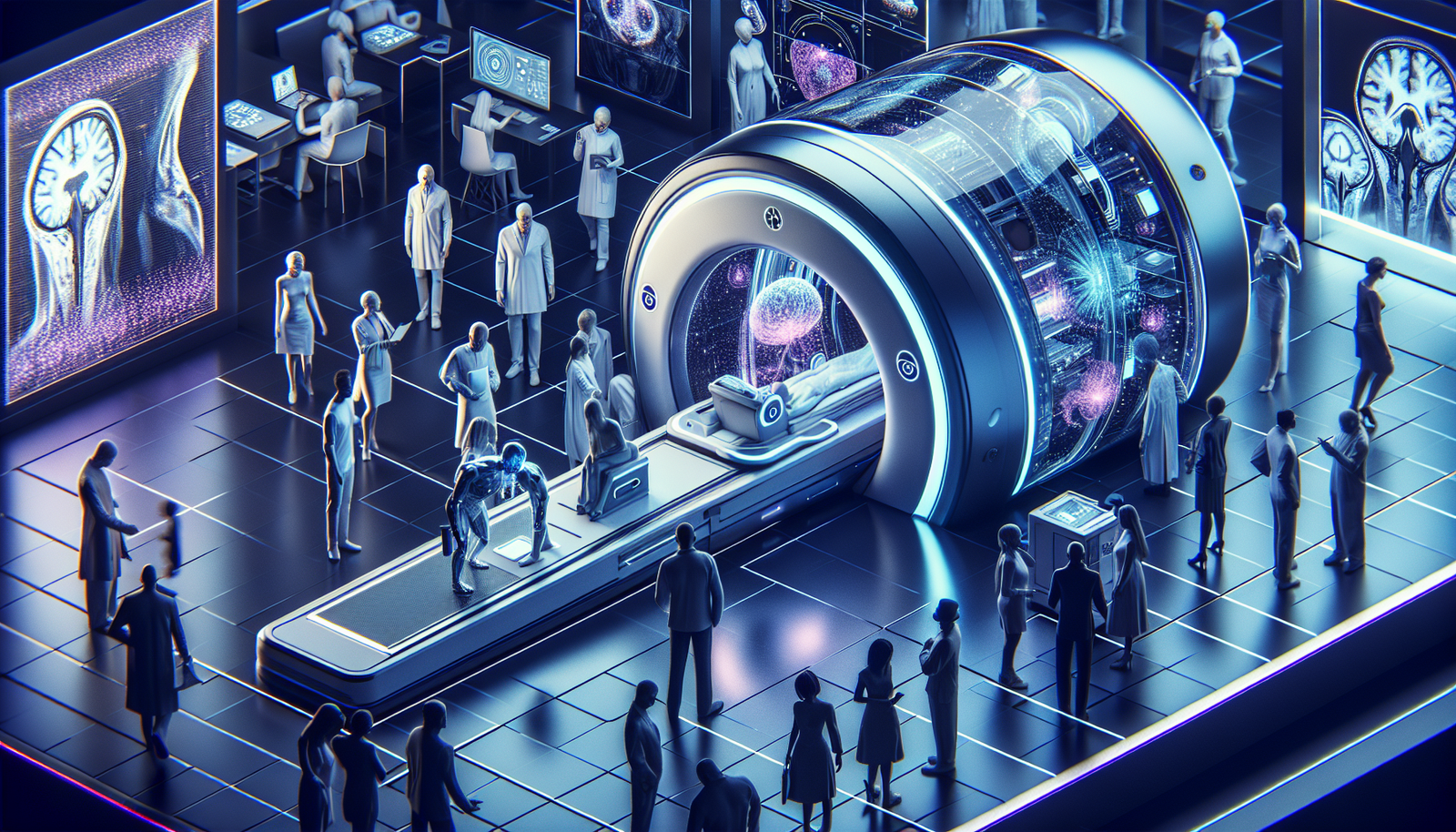Chipiron revolutionizes medical imaging. The quantum sensors make it possible to envision a portable MRI, making the technology accessible to everyone. This technological advancement transforms the landscape of medical diagnostics, promoting unparalleled access to care.
Chipiron’s Innovation
Chipiron stands out in the medical technology sector by developing a portable MRI. Equipped with quantum sensors, this technology aims to make magnetic resonance imaging more accessible to healthcare professionals and patients. Traditionally, MRIs are bulky and expensive, but this new approach promises to transform practices.
Scale and Benefits
The compact model offered by Chipiron provides unprecedented portability. Easy to transport, this device can be used in various environments, including rural clinics and medical missions. The ability to perform exams outside traditional hospitals could significantly improve access to care. The reduction in costs associated with building specialized facilities is one of the major advantages of this innovation.
Quantum Sensor Technology
Quantum sensors are at the heart of this advancement. Thanks to their exceptional sensitivity, they allow for precise detection of signals emitted by the human body. This precision translates into superior image quality compared to conventional devices. Chipiron aims not only to enhance images but also to shorten examination times. Patients will spend less time in cumbersome equipment.
Clinical Application and Future Potential
The use of portable MRI could transform diagnostics, particularly in emergencies. For example, considering its use in ambulances opens fascinating perspectives for pre-hospital medicine. Healthcare professionals could obtain diagnostic images at the exact moment they are needed. The reach of this technology also extends to research, where clinical trials will benefit from quicker access to accurate data.
Regulatory Challenges and Acceptance
Before large-scale commercialization, Chipiron will need to navigate a complex regulatory landscape. Health authorities must evaluate the safety and efficacy of this new technology. Staying attentive to public health policies will be crucial for the success of the portable MRI. Acceptance by healthcare professionals will also play an essential role in implementing these new practices. Training doctors in the use of the device will be critical.
Impact on the Healthcare Industry
This innovation could redefine the medical imaging landscape. Other companies may be encouraged to develop similar technologies, creating a competitive dynamic. The pressure on medical equipment prices could also decrease, thereby promoting better access to care for a wider audience. Broader access to precise diagnostic tools could also strengthen public health initiatives, such as early disease screening.
Conclusion and Perspectives
Chipiron marks a decisive turning point in the field of medical imaging with its range of portable MRIs. By making magnetic resonance imaging accessible, the company aims to transform the healthcare sector and improve patient outcomes. Noticeable improvements in accessibility and quality of care are on the horizon.
Frequently Asked Questions
What is a portable MRI and how does it work?
The portable MRI is a magnetic resonance imaging device designed to be lightweight and easily transportable. It uses quantum sensors to generate high-precision images while being accessible in various environments, including clinics and field settings.
What are the advantages of portable MRI compared to traditional MRI?
The advantages of a portable MRI include the ability to perform examinations in remote locations, a reduction in operating costs, and better accessibility for patients, thus reducing waiting times for diagnoses.
How do quantum sensors improve the quality of images produced by the MRI?
Quantum sensors allow for more sensitive detection of signals, resulting in higher quality images and a reduction in artifacts. This significantly enhances the resolution of MRI images.
Is the portable MRI as effective as traditional models?
Yes, the portable MRI developed by Chipiron is designed to offer efficiency and precision comparable to traditional devices while being more accessible and suited to various environments.
What are the potential clinical applications of this technology?
This technology can be used for various clinical applications, including the diagnosis of neurological, orthopedic, and cardiovascular conditions, allowing for targeted and rapid care.
What types of patients can benefit from the portable MRI?
All patients, especially those living in remote areas, the elderly, or those with mobility issues, can benefit from this innovation, as it facilitates access to essential imaging examinations.
How does Chipiron ensure patient safety during the use of the portable MRI?
Chipiron employs rigorous safety protocols and advanced technologies to ensure that patients are protected during the examination, thus ensuring a safe health environment.
When will it be available for commercial use?
Chipiron plans to make the portable MRI accessible for commercialization in the near future, with ongoing clinical trials to ensure its effectiveness and safety.





